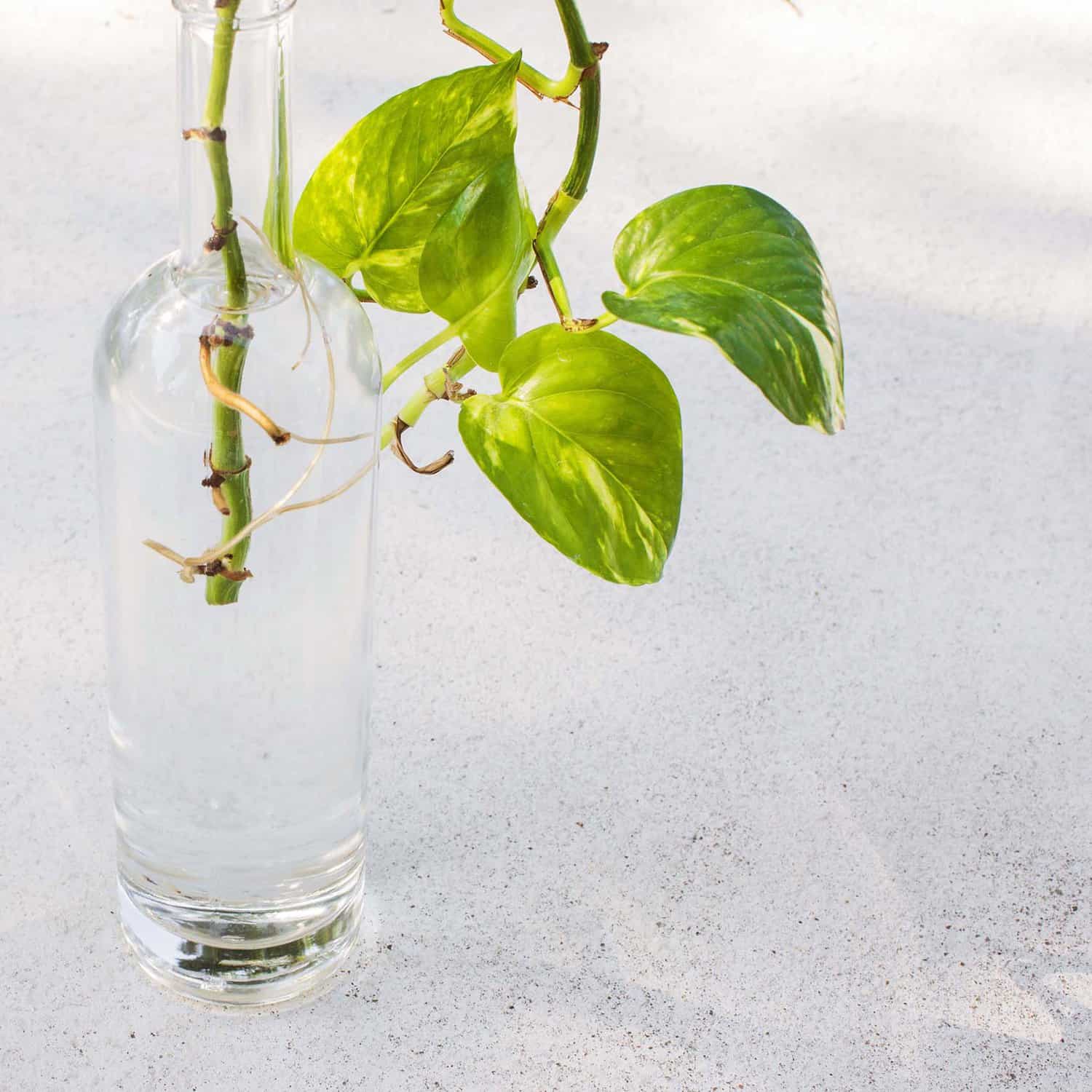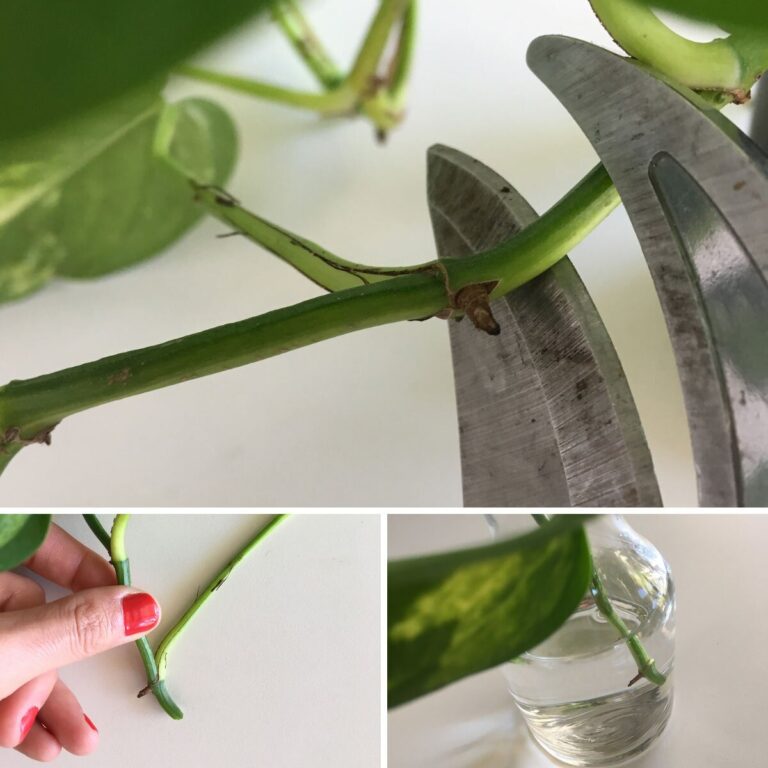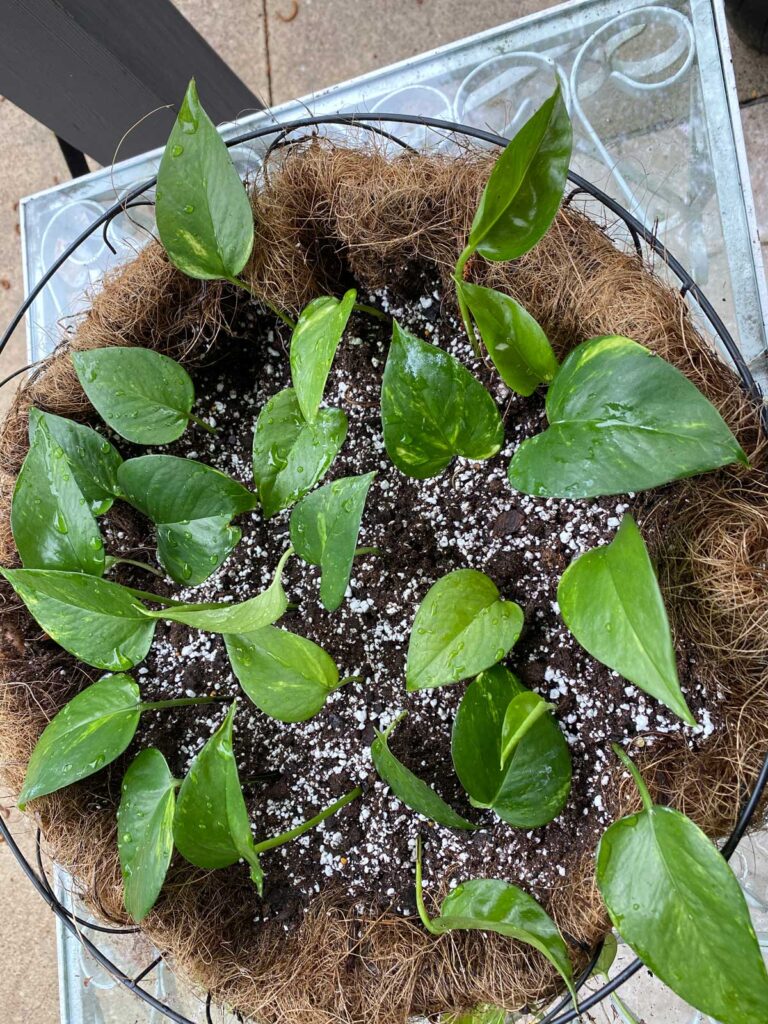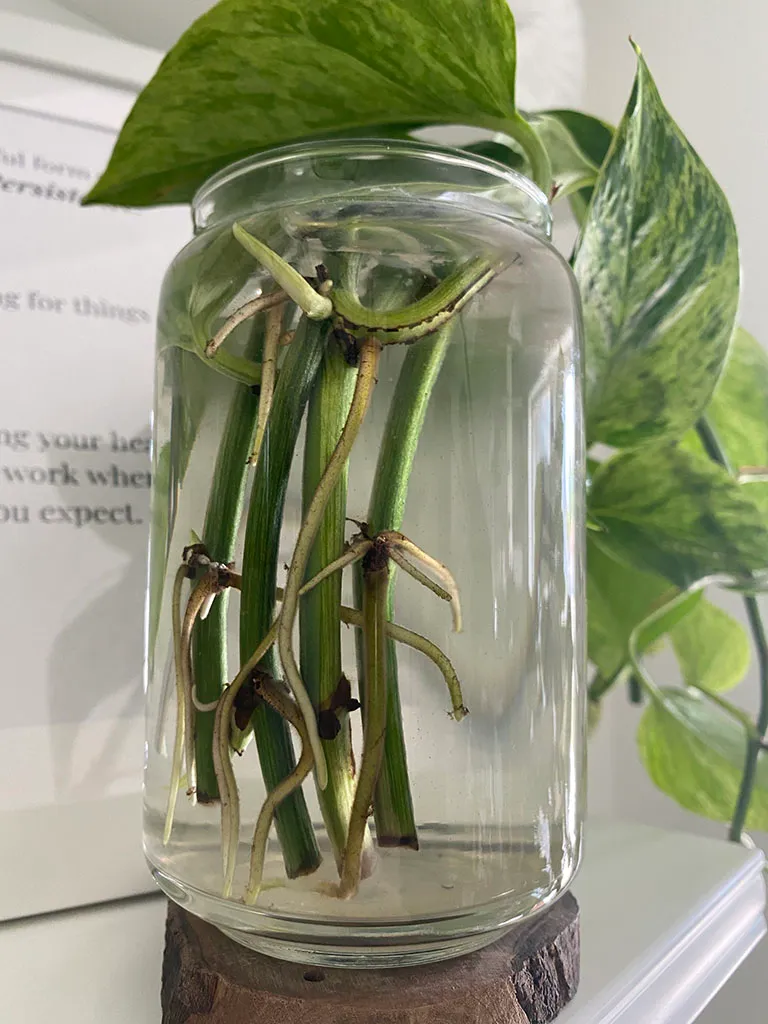Common Pothos Plant Issues
Caring for pothos plants can be both rewarding and challenging. Understanding the common problems that pothos plants face is essential to maintaining their health.
Phytophthora Root Rot
Phytophthora root rot is among the most prevalent diseases affecting pothos plants. It is caused by the pathogen Phytophthora nicotianae. This disease often enters through imported propagative cuttings, making it a common issue for indoor gardeners (UF IFAS EDIS).
Symptoms:
- Wilted appearance
- Blackened and mushy roots
- Yellowing leaves
To avoid this problem, ensure that your pothos plant soil is well-draining and avoid overwatering. If you suspect root rot, consider trimming the affected roots and repotting your plant in fresh, sterile soil.
Ethylene Damage
Ethylene damage commonly occurs during the fall and winter months. It is characterized by yellowing foliage that eventually turns tan or light brown. The affected leaves often have a wilted appearance.
Symptoms:
- Yellowing leaves
- Tan to light brown discoloration
- Wilted and drooping foliage
To minimize ethylene exposure, keep your pothos away from ripening fruits and certain wilting flowers. Ensure proper ventilation and avoid drastic temperature changes.
Chemical Spray Sensitivity
Pothos plants are sensitive to certain chemical sprays, particularly fungicides containing mefenoxam. The application of such chemicals can cause white bleaching and tip burn on the foliage.
Symptoms:
- White bleaching on leaves
- Tip burn
To prevent chemical spray sensitivity, use organic or mild chemical treatments when dealing with pests or diseases. Always test a small area before applying any spray widely.
Maintaining a healthy pothos plant involves understanding these common problems. Regular inspection and proper care practices, such as proper watering techniques and light requirements, can help keep your plants thriving. For more about caring for pothos plants, explore our guides on pothos plant care and pothos plant trimming.
Recognizing Pothos Plant Problems
Bacterial Wilt Disease
Bacterial wilt disease in pothos is caused by the bacteria Ralstonia solanacearum. It’s most commonly observed at the single-node rooting stage, where the bacteria infect the plant, leading to wilting leaves and black veining. Early detection is key to managing this issue. Often, the affected plant can exhibit leaf drooping and discoloration.
| Symptom | Cause | Solution |
|---|---|---|
| Wilting leaves | Bacteria Ralstonia solanacearum | Remove infected leaves, improve drainage |
For more detailed care tips, check out our guide on pothos plant care in water.
Excess Manganese Effects
Excess manganese can create issues that resemble diseases in pothos foliage. This usually manifests as yellow flecking or spotting on older leaves and can be caused by over-fertilization, soil acidification, or fungicide accumulation (UF IFAS EDIS). Monitoring your fertilization practices is essential to prevent this condition.
| Symptom | Cause | Solution |
|---|---|---|
| Yellow flecking or spots | Excess manganese | Adjust fertilization, check soil pH |
For more information on choosing the right soil, read our article on pothos plant soil mix.
Yellowing and Browning Leaves
Yellowing and browning leaves are common problems in pothos plants and can be attributed to several factors:
- Yellowing Leaves: Often caused by underwatering, overwatering, lack of light, or nutrient imbalances (Houseplant Resource Center).
- Browning Leaves: Typically due to overwatering, underwatering, exposure to direct sunlight, or chemicals like chlorine in tap water (Houseplant Resource Center).
| Symptom | Potential Cause | Solution |
|---|---|---|
| Yellow leaves | Overwatering | Let soil dry out completely before watering again (Martha Stewart) |
| Yellow leaves | Underwatering | Increase watering frequency |
| Brown leaves | Direct sunlight | Move plant to indirect light |
| Brown leaves | Chlorinated water | Use distilled water |
Observing these symptoms in your pothos? Learn more about proper watering in our pothos plant watering section, and discover the best light requirements for your plant in pothos plant light requirements.
Taking care of a pothos plant involves recognizing these common problems and understanding how to effectively address them. Monitoring your plant closely and adjusting care routines can help ensure your pothos remains healthy and vibrant.
Troubleshooting Pothos Plant Symptoms
Identifying and fixing issues with your pothos plant can help it thrive. Below are common symptoms and their solutions.
Overwatering and Underwatering
Overwatering and underwatering are frequent causes of problems in pothos plants.
| Symptom | Cause | Solution |
|---|---|---|
| Yellow Leaves | Overwatering | Let soil dry out completely, trim affected leaves, and adjust watering schedule. (Lively Root) |
| Brown Leaves | Underwatering or Chlorine in Tap Water | Water well and switch to filtered water. (Houseplant Resource Center) |
| Mushy or Blackened Leaves | Root Rot from Overwatering | Trim affected roots, repot in well-draining soil. (Blooming Backyard) |
For more about pothos plant watering and to learn about how to avoid common pitfalls, read our related guides.
Light Exposure Issues
Light exposure greatly impacts the health and appearance of pothos plants.
| Symptom | Cause | Solution |
|---|---|---|
| Yellow Patches | Too Much Sun | Move the plant to a spot with indirect light. (Martha Stewart) |
| Low Variegation | Insufficient Light | Increase exposure to indirect sunlight or use grow lights. (Houseplant Resource Center) |
| Leaf Drop | Low Light Conditions | Relocate to a brighter area. (Martha Stewart) |
To understand more about pothos plant light requirements, explore our detailed article.
Black Spots and Drooping Leaves
Black spots and drooping can be alarming but are usually manageable with the right care.
| Symptom | Cause | Solution |
|---|---|---|
| Black Spots | Overwatering, Root Rot, Low Temperatures | Improve drainage, avoid overwatering, and keep plant in a warm environment. (Houseplant Resource Center) |
| Drooping Leaves | Underwatering | Water the plant thoroughly. (Houseplant Resource Center) |
If you notice pothos plant black spots or pothos plant drooping, consult our resources for in-depth guidance.
By recognizing these symptoms and their causes, you can take effective steps to restore your pothos plant to health. For more comprehensive tips and solutions, check out our articles on pothos plant care and pothos plant soil mix.
Solutions for Healthy Pothos Plants
Maintaining a healthy pothos plant involves a combination of proper watering, understanding light needs, and addressing pest infestations.
Proper Watering Techniques
Correct watering techniques are essential to prevent common pothos plant problems. Pothos should be watered when the top inch or two of soil feels dry. Overwatering is one of the primary reasons for issues like yellowing leaves and root rot (Martha Stewart).
For a precise watering routine:
| Factor | Recommended Action |
|---|---|
| Soil Moisture | Water when the top 1-2 inches are dry (Lively Root) |
| Watering Frequency | Adjust based on season, pot size, soil type, and humidity |
| Method | Bottom watering is recommended for thorough hydration (Lively Root) |
| Length of Dry Period | Can go 3+ weeks without water (Lively Root) |
Understanding when and how to water your pothos can significantly improve its health and appearance.
Understanding Light Needs
Light exposure is another critical factor for a thriving pothos plant. Pothos plants can tolerate low light but thrive best in bright, indirect sunlight. Insufficient light can slow down growth and cause leaves to turn yellow.
| Light Condition | Effect on Pothos |
|---|---|
| Bright Indirect Light | Optimal growth and vibrant leaves |
| Low Light | Tolerable but can slow growth and cause yellow leaves (Pothos Plant Light Requirements) |
Ensuring your pothos receives the right light conditions will promote healthy, lush foliage. For more details, see our guide on pothos plant light requirements.
Addressing Pest Infestations
Pests can also contribute to pothos plant problems. Common pests include spider mites, mealybugs, and aphids. To keep your plant pest-free, regularly inspect the leaves and stems, especially if you notice symptoms like yellowing, spots, or holes.
| Pest | Appearance | Remedy |
|---|---|---|
| Spider Mites | Tiny red or brown dots, webbing | Wipe leaves with soapy water, use insecticidal soap |
| Mealybugs | White cotton-like clusters | Dab with rubbing alcohol, use neem oil |
| Aphids | Small green, black, or white bugs | Spray with water, use insecticidal soap (House Plant Journal) |
Addressing pest infestations promptly can save your pothos from extensive damage. For additional information on keeping your plant healthy, consult our article on pothos plant care.
Following these guidelines will help ensure your pothos remains healthy and vibrant. Whether it’s understanding proper watering techniques, optimizing light exposure, or addressing pest issues, you’ll be well-equipped to handle any pothos plant problems that come your way.




